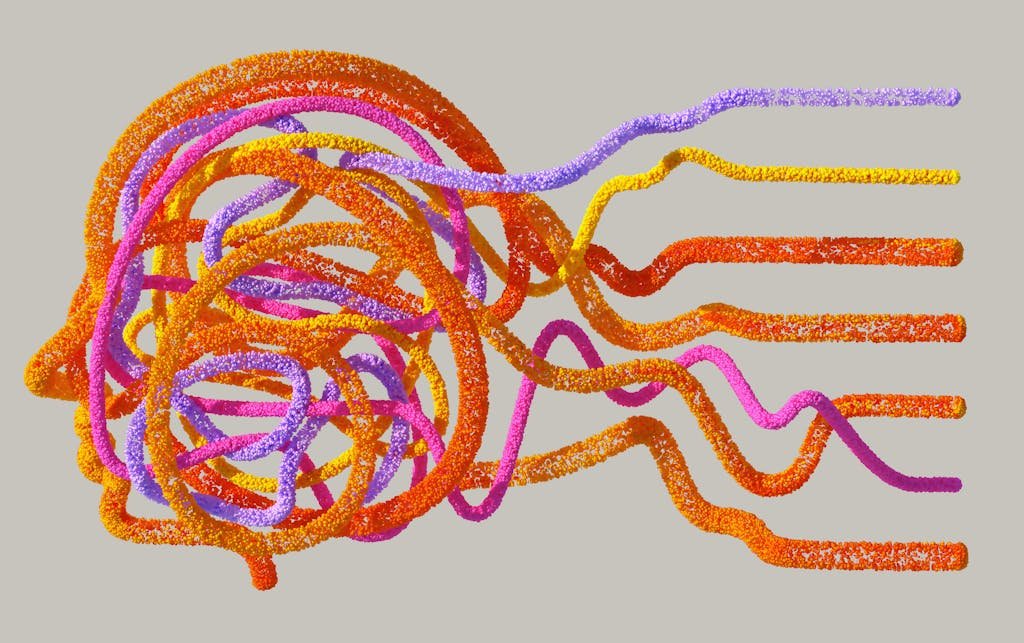Trends Report from SEMrush: Top 8 Digital Marketing Trends for 2024
SEMrush Top 8 Digital Marketing Trends for 2024: Comprehensive Analysis
The Short and the Quick
SEMrush’s comprehensive analysis of digital marketing trends for 2024 reveals a present increasingly shaped by artificial intelligence, evolving consumer behaviours, and the need for authentic, expert-driven content. Based on surveys of over 2,600 businesses and extensive industry research, the report identifies eight critical trends that are reshaping how brands connect with their audiences and drive business results.
The findings demonstrate a clear shift toward AI-enhanced marketing strategies, with 67% of businesses now incorporating artificial intelligence into their content marketing and SEO efforts. Simultaneously, there’s a growing emphasis on expertise and authenticity as businesses combat the proliferation of low-quality, AI-generated content that lacks human insight and authority.

Trend 1: AI Integration Becomes Standard Practice
The most significant finding from SEMrush’s research on trends is the widespread adoption of artificial intelligence across marketing functions. Their survey revealed that 67% of businesses now use AI for content marketing and SEO, marking a fundamental shift in how marketing teams operate and scale their efforts.
This trend manifests in several key areas. Text-to-video content creation represents the frontier of AI marketing tools, with technologies like OpenAI’s Sora demonstrating the potential to drastically reduce video production time and costs. The report indicates that 52% of businesses are actively looking to experiment with AI video generators to enhance their marketing capabilities.
Personalisation at scale has emerged as another critical AI application. Companies like Stitch Fix exemplify this approach by using generative AI to process over 4.5 billion customer data points, enabling personalised product recommendations and experiences for millions of clients. AI-powered email marketing campaigns now optimise send times based on customer behaviour patterns and generate personalised subject lines that resonate with individual recipients.
The implications for marketing teams are profound. AI tools are no longer experimental additions to marketing stacks but essential components for maintaining competitive advantage. Organisations that fail to integrate AI capabilities risk falling behind in efficiency, personalisation, and content production capacity.
Trend 2: Expert-Led Content Gains Premium Value
In response to the flood of AI-generated content saturating digital channels, SEMrush identifies a counter-trend toward expert-led content that emphasises human expertise, experience, and authority. This shift aligns directly with Google’s E-E-A-T (Experience, Expertise, Authoritativeness, and Trustworthiness) guidelines, which increasingly favour content that demonstrates genuine human insight and authoritative knowledge.
Expert-led content addresses complex industry pain points that generic, surface-level articles cannot tackle effectively. It provides deeper insights and nuanced perspectives that resonate with sophisticated audiences seeking reliable information. The report emphasises that this type of content helps brands position themselves as authoritative sources in their respective fields.
The strategic approach to expert-led content involves identifying authorities who align with brand values, focussing on unique data and research insights, and optimising distribution across multiple channels in collaboration with featured experts. This trend represents a return to quality over quantity in content production, challenging the rapid-scale content strategies that many brands adopted with AI tools.
Trend 3: Short-Form Video Dominance Continues
SEMrush’s State of Content Marketing 2023 Global Report confirms that short-form video has become the top-performing video format among marketers and business owners, with 43% identifying it as their most effective video content type. This format typically ranges from a few seconds to a few minutes, optimised for platforms like TikTok, Instagram Reels, YouTube Shorts, and LinkedIn.
The success of short-form video stems from its ability to deliver immediate value and entertainment in an increasingly attention-scarce environment. The format requires sophisticated content strategy, including platform-specific customisation, strong opening hooks, clear messaging, and brand consistency within extremely limited timeframes.
Best practices for short-form video success include repurposing longer content into attention-grabbing clips, participating strategically in trending challenges and formats, and maintaining brand identity through consistent visual elements and messaging. The trend indicates that video marketing budgets and resources are increasingly shifting toward these bite-sized formats that drive higher engagement rates than traditional long-form content.
Trend 4: Programmatic SEO Scales Content Creation
One of the more esoteric trends is programmatic SEO. This hasmerged as a sophisticated technique for automating webpage creation and optimisation at scale, particularly beneficial for large websites with extensive product catalogues or dynamic content. The report highlights this trend as essential for businesses managing thousands of pages or frequently changing content, such as e-commerce sites and travel booking platforms.
TripAdvisor serves as a prime example of successful programmatic SEO implementation, ranking highly for numerous variations of “best hotels in [hot city to visit]” queries across different geographic markets. This approach allows businesses to efficiently target entire categories of keywords using templated page structures while maintaining optimisation quality.
However, SEMrush emphasises that programmatic SEO requires careful execution and coding expertise to avoid generating low-quality or duplicate content at scale. The technique represents a significant investment in technical infrastructure but offers substantial returns for businesses that can implement it effectively. Success depends on maintaining content quality standards while achieving the efficiency gains that programmatic approaches provide.
Trend 5: B2B Influencer Marketing Expands
The influencer marketing model, traditionally associated with B2C brands and lifestyle content, is gaining significant traction in B2B markets. SEMrush identifies this shift as driven by the authority and industry expertise that B2B influencers possess, often making them valuable thought leaders and trusted information sources for professional audiences.
B2B influencer marketing differs fundamentally from its B2C counterpart in both approach and objectives. While B2C campaigns often focus on short-term engagement and immediate sales through lifestyle content on mainstream platforms, B2B influencer partnerships emphasise long-term relationship building and credibility establishment through in-depth discussions, webinars, and detailed case studies.
The report highlights industry leaders like Jason Lemkin of SaaStr as examples of B2B influencers who command significant professional followings. These partnerships leverage established authority and influence to promote brands within specific industry contexts, often yielding higher trust and conversion rates than traditional advertising approaches.
Success in B2B influencer marketing requires identifying thought leaders whose expertise aligns with brand objectives and whose audiences match target customer profiles. The longer sales cycles and higher consideration typical in B2B purchases make influencer credibility and expertise particularly valuable in this context.
Trend 6: Native Advertising Enhances User Experience
Native advertising has gained prominence as a less disruptive alternative to traditional display advertising, with brands increasingly adopting formats that match the style and appearance of surrounding content. SEMrush reports that these ads often perform better than traditional formats because they integrate seamlessly into user experiences without interrupting content consumption.
The effectiveness of native advertising stems from its subtle approach to promotion. Users experience native ads as organic content, only recognising the commercial nature through discrete “sponsored” or “recommended” labels. This approach reduces advertising resistance while maintaining engagement levels that traditional banner ads cannot achieve.
Examples from major publications like Newsweek demonstrate how native advertising can complement editorial content while providing value to readers. The format works particularly well for content marketing objectives, allowing brands to promote valuable resources and insights rather than directly pushing products or services.
Best practices for native advertising include crafting compelling headlines without resorting to clickbait, maintaining conversational and friendly copy tones, and testing different native formats to identify the most effective approaches for specific audiences and objectives.
Trend 7: Preparing for the Cookie-less Future
Google’s gradual phase-out of third-party cookies, beginning in 2024 and completing in 2025, represents one of the most significant changes in digital advertising infrastructure in years. SEMrush emphasises that this transition requires fundamental shifts in how marketers approach audience targeting and measurement.
The elimination of third-party cookies removes a primary method for tracking user behaviour across websites, forcing marketers to develop alternative data collection and audience segmentation strategies. This change reflects growing consumer demands for privacy protection and data transparency, requiring businesses to rebuild their advertising approaches around first-party data and contextual targeting.
Adaptation strategies include prioritising first-party data collection through engaging content, free tools, loyalty programmes, and newsletter subscriptions. Contextual advertising, which places ads on relevant pages based on content rather than user tracking, becomes increasingly important. Building trust through transparent data practices and offering tangible value in exchange for user information represents a critical component of post-cookie marketing success.
The transition challenges existing measurement and attribution models while creating opportunities for businesses that can effectively collect and utilise first-party data. Companies that proactively address these changes will maintain competitive advantages as the advertising landscape transforms.
Trend 8: Social Media as Search Engine
A fundamental shift in search behaviour, particularly among Gen Z users, has positioned social media platforms as primary search engines for many types of queries. SEMrush reports that over half of Gen Z respondents use social media to search for information, compared to 45% who use traditional search engines.
This behavioural change affects multiple content categories, including product reviews, tutorial videos, trending topics, and lifestyle inspiration. Platforms like YouTube, TikTok, and Instagram have become preferred destinations for discovery and research, challenging the traditional dominance of Google and other conventional search engines.
The trend requires marketers to develop social media strategies that prioritise searchability and discoverability within platform algorithms. This includes incorporating relevant keywords, utilising trending hashtags, and creating content that matches the search intent typical on each platform.
Success in social search optimisation requires understanding the unique search behaviours and content preferences on different platforms. YouTube users might search for detailed tutorials, while TikTok users prefer quick tips and visual demonstrations. Brands must adapt their content strategies to match these platform-specific search patterns while maintaining consistent messaging across channels.
Strategic Implications and Recommendations
The eight trends identified by SEMrush represent interconnected shifts that require coordinated strategic responses. The rise of AI capabilities must be balanced with investments in human expertise and authority. The dominance of short-form video content needs to be supported by sophisticated production and distribution strategies. The evolution of search behaviour across social platforms demands expanded content strategies beyond traditional SEO approaches.
Organisations should prioritise AI integration while maintaining content quality standards through expert collaboration. Video marketing budgets should shift toward short-form content production capabilities. Data collection strategies must evolve to rely less on third-party cookies and more on first-party relationships and contextual targeting.
The transition period presents both challenges and opportunities. Businesses that successfully navigate these trends will establish competitive advantages in audience engagement, content effectiveness, and advertising efficiency. Those that fail to adapt risk falling behind in an increasingly sophisticated and demanding digital marketing landscape.
What It All Means
SEMrush’s analysis reveals a digital marketing environment in significant transition, driven by technological capabilities, changing consumer expectations, and evolving platform ecosystems. The successful implementation of these trends requires strategic investment, technical capabilities, and a deep understanding of audience behaviours across multiple channels and touchpoints.
The convergence of AI efficiency with human expertise, the dominance of video content, and the transformation of search behaviour create both complexity and opportunity for digital agencies like EmuHunt. Success in this environment depends on adaptability, strategic focus, and the ability to balance technological capabilities with authentic human connection and value creation.
The original report published on 30 May 2024, written by Author: Ravi Pandya and Contributors: Chris Shirlow and Boris Mustapic can be found here.


